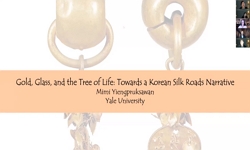The imagery of Eden, particularly the water of life and the tree of life, prominently appears in both the first book of the Old Testament, Genesis 2-3, and the last book of the New Testament, Revelation 21-22. This parallel underscores the Bible’s r...
http://chineseinput.net/에서 pinyin(병음)방식으로 중국어를 변환할 수 있습니다.
변환된 중국어를 복사하여 사용하시면 됩니다.
- 中文 을 입력하시려면 zhongwen을 입력하시고 space를누르시면됩니다.
- 北京 을 입력하시려면 beijing을 입력하시고 space를 누르시면 됩니다.
https://www.riss.kr/link?id=A109489706
-
저자
김영선 (마리아의 전교자 프란치스코 수녀회)
- 발행기관
- 학술지명
- 권호사항
-
발행연도
2024
-
작성언어
Korean
-
주제어
Garden of Eden ; tree of life ; water of life ; paradise ; presence of God ; 에덴 동산 ; 구원 ; 생명 나무 ; 물 ; 낙원 ; 하느님의 현존
-
등재정보
KCI등재후보
-
자료형태
학술저널
-
수록면
10-49(40쪽)
- DOI식별코드
- 제공처
-
0
상세조회 -
0
다운로드
부가정보
다국어 초록 (Multilingual Abstract)
First, I will explore the depiction of Eden in the narrative of the Garden (Gen 2:4a-3:24), revealing it as a sacred place where God dwells and an ideal environment for human existence. This dual symbolism is expanded in la- ter texts that reference Eden, including those describing the Tabernacle, the Solomonic Temple, and the Ideal Temple envisioned by Ezekiel in chapters 40-48 of his book. These passages emphasize characteristics of God’s dwelling place, particularly the water flowing from the sanctuary, symbolizing God as the source of life. The Edenic imagery, representing abundance and blessing, is also linked to the rewards of Torah observance, the Messianic hope, the anticipated restoration of Jerusalem and Zion, and the prosperity associated with new creation. Additionally, this imagery evokes the abode of the righteous after death.
What is important is while these texts convey the restoration of Eden, they do not provide a definitive vision of perfected salvation, leaving many aspects ambiguous. A key feature of this restored state is the unbreakable proximity to God’s presence. Ultimately, while God restores salvation, participation in this salvation necessitates purification through divine grace.
The imagery of Eden, particularly the water of life and the tree of life, prominently appears in both the first book of the Old Testament, Genesis 2-3, and the last book of the New Testament, Revelation 21-22. This parallel underscores the Bible’s role as a thematic map that directs humanity toward salvation, signifying the restoration of the paradise lost due to human sin. Focused on this observation, this study investigates how the imagery of Eden elucidates various perspectives on salvation. To achieve this, texts that reference the Garden of Eden and its related themes, are analyzed, with focus on their significance with regard to salvation.
First, I will explore the depiction of Eden in the narrative of the Garden (Gen 2:4a-3:24), revealing it as a sacred place where God dwells and an ideal environment for human existence. This dual symbolism is expanded in la- ter texts that reference Eden, including those describing the Tabernacle, the Solomonic Temple, and the Ideal Temple envisioned by Ezekiel in chapters 40-48 of his book. These passages emphasize characteristics of God’s dwelling place, particularly the water flowing from the sanctuary, symbolizing God as the source of life. The Edenic imagery, representing abundance and blessing, is also linked to the rewards of Torah observance, the Messianic hope, the anticipated restoration of Jerusalem and Zion, and the prosperity associated with new creation. Additionally, this imagery evokes the abode of the righteous after death.
What is important is while these texts convey the restoration of Eden, they do not provide a definitive vision of perfected salvation, leaving many aspects ambiguous. A key feature of this restored state is the unbreakable proximity to God’s presence. Ultimately, while God restores salvation, participation in this salvation necessitates purification through divine grace.
동일학술지(권/호) 다른 논문
-
- 신학과사상학회
- 하성훈
- 2024
- KCI등재후보
-
- 신학과사상학회
- 이재룡
- 2024
- KCI등재후보
-
이브 콩가르의 성령론적 그리스도론에서 성자와 성령의 파견의 일치와 구별성
- 신학과사상학회
- 하성훈
- 2024
- KCI등재후보
-
[서평] 마우리치오 코스타 저『사제 정체성과 양성 사이: 사제 영성에 관하여』
- 신학과사상학회
- 최정훈
- 2024
- KCI등재후보





 스콜라
스콜라






